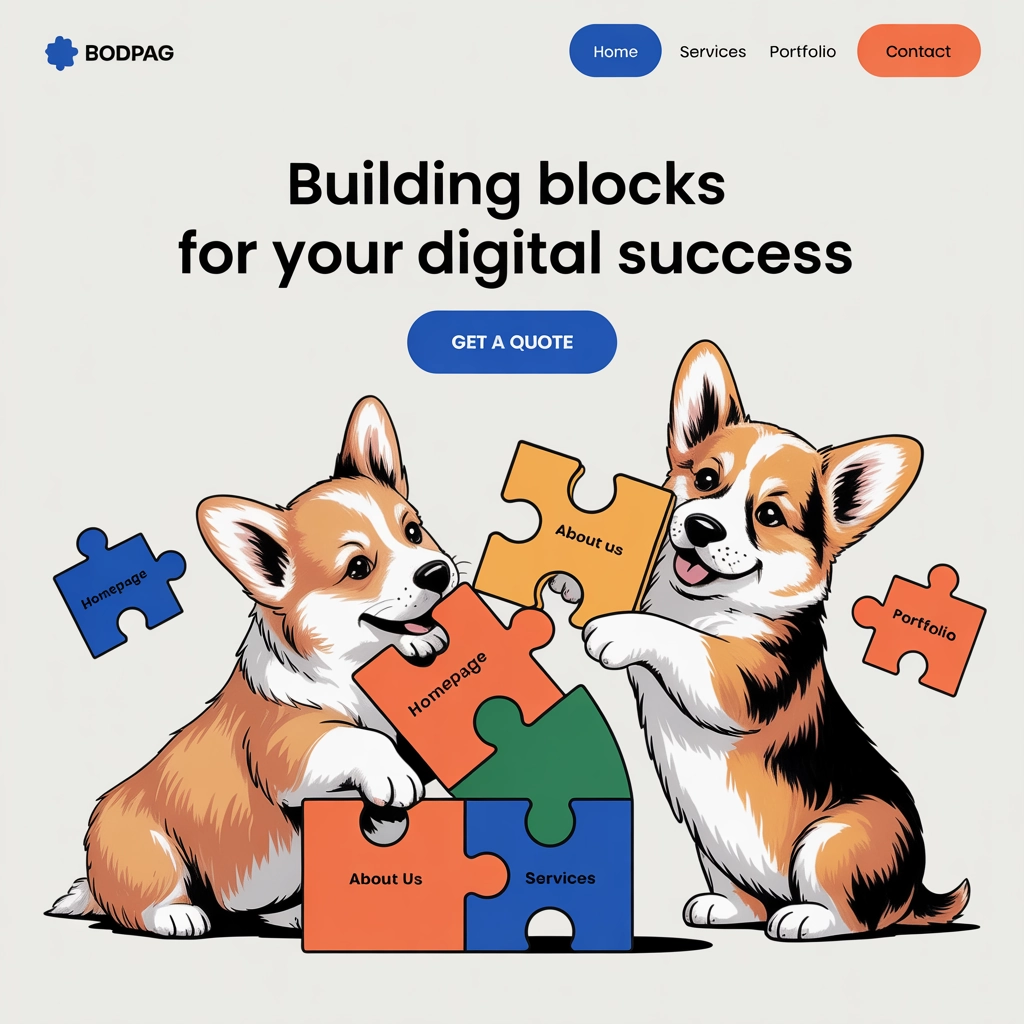Why Aren't My Blog Articles Indexed by Google? Real Reasons (and What to Do About It)
Discover the real reasons your blog posts aren't getting indexed by Google and learn proven strategies to fix indexing issues and improve your search visibility.
Why Aren't My Blog Articles Indexed by Google? Real Reasons (and What to Do About It)
You've spent hours crafting the perfect blog post. The research is solid, the writing is engaging, and you've even optimized it for SEO. You hit publish, wait a few days... and nothing. Your post is invisible to Google. Sound familiar?
Before you pull your hair out, know that you're not alone. Even experienced content creators face indexing issues. The good news? Most indexing problems have clear causes and straightforward solutions.
What Does "Not Indexed" Actually Mean?
First, let's clarify what we're talking about. When your content isn't indexed, it means Google hasn't added your page to its searchable database. This differs from ranking problems — a page can be indexed but still appear on page 10 of search results. If your page isn't indexed, it can't appear in search results at all.

The Most Common Reasons Your Content Isn't Getting Indexed
1. Your Content Is Too New
The Situation: Google doesn't instantly crawl and index new content, no matter how amazing it is.
The Solution: Patience is partially the answer, but you can expedite the process:
- Submit your URL directly through Google Search Console's URL Inspection tool
- Update your XML sitemap and resubmit it (more on this below)
- Share your content on social media and through newsletters to increase visibility
Reality Check: Even with these actions, indexing can take anywhere from a few hours to several weeks, depending on your site's authority and crawl frequency.
2. Technical Barriers Are Blocking Google's Crawlers
The Situation: Several technical issues can prevent Google from properly accessing your content:
- Robots.txt file accidentally blocking search engines
- Noindex tags or directives in your page's HTML
- Server errors or 404s when Google attempts to crawl
- Redirect chains or loops that confuse crawlers
The Solution: Run a technical audit:
- Check your robots.txt file (typically found at yourdomain.com/robots.txt)
- Inspect your page's HTML for accidental noindex tags
- Review server logs for errors during Googlebot visits
- Use Google Search Console's Coverage report to identify specific technical issues
# Good robots.txt example
User-agent: *
Allow: /
# Problematic robots.txt example
User-agent: *
Disallow: /
3. Low-Quality or Duplicate Content
The Situation: Google prioritizes high-quality, original content. Pages with thin content, excessive ads, or content that's duplicated elsewhere may be deprioritized for indexing.
The Solution:
- Ensure each page has substantial, unique content (aim for at least 300 words, though 800+ is better)
- Check for duplicate content issues with tools like Copyscape
- Focus on providing genuine value rather than keyword stuffing
- Use canonical tags if you intentionally have similar content across multiple URLs
4. Poor Site Architecture and Internal Linking
The Situation: If your new content is buried deep within your site with few or no internal links pointing to it, Google may not discover it or will assign it low priority.

The Solution:
- Link to new content from your homepage or main category pages
- Implement a related posts section to connect thematically similar content
- Create a logical site hierarchy that makes content discoverable within 3-4 clicks from the homepage
- Add a clear, HTML sitemap for both users and search engines
5. Crawl Budget Limitations
The Situation: Every website is allocated a certain "crawl budget" — the number of pages Google will crawl within a given timeframe. Large sites or those with performance issues may have their new content crawled less frequently.
The Solution:
- Improve site speed and performance (use Google PageSpeed Insights for guidance)
- Remove or noindex low-value pages that waste crawl budget
- Fix broken links and redirect chains that consume crawl resources
- Prioritize important pages in your XML sitemap
6. Missing or Problematic XML Sitemap
The Situation: Your XML sitemap acts as a roadmap for search engines, helping them discover and prioritize content. A missing, outdated, or error-filled sitemap can hamper indexing.
The Solution:
- Create and maintain an up-to-date XML sitemap
- Ensure your sitemap is referenced in your robots.txt file
- Submit your sitemap through Google Search Console
- Set up automatic sitemap updates when new content is published
Example sitemap reference in robots.txt:
User-agent: *
Allow: /
Sitemap: https://www.yourwebsite.com/sitemap.xml
7. Mobile Usability Issues
The Situation: With Google's mobile-first indexing, pages that perform poorly on mobile devices may face indexing challenges.
The Solution:
- Ensure your site is fully responsive
- Fix any mobile usability issues flagged in Google Search Console
- Test your pages on various mobile devices and screen sizes
- Optimize images and scripts for mobile performance
How to Check If Your Content Is Indexed
Before diving into fixes, confirm whether your content is actually indexed:
-
Use the site: search operator: Type
site:yourdomain.com/specific-post-urlinto Google. If your page appears in results, it's indexed. -
Check Google Search Console: Use the URL Inspection tool to check a specific URL's status.
-
Review the Coverage report: Look under "Index" > "Coverage" in Google Search Console to see patterns of non-indexed content.

A Step-by-Step Plan to Fix Indexing Issues
Now that you understand the why, here's a systematic approach to solving indexing problems:
Step 1: Diagnose the Specific Issue
- Check Google Search Console for coverage errors or warnings
- Note the specific error message (e.g., "Discovered - currently not indexed" or "Crawled - currently not indexed")
- Review your page's technical setup using the URL Inspection tool
Step 2: Fix Technical Barriers
- Remove any noindex directives or robots.txt blocks if unintentional
- Fix server errors, broken redirects, or 404s
- Ensure your page loads quickly (under 3 seconds ideally)
- Verify proper HTTP status codes (should be 200 OK)
Step 3: Improve Content Quality and Uniqueness
- Expand thin content with more valuable information
- Remove duplicate content or implement canonical tags
- Balance text-to-HTML ratio (too much code with little content is a red flag)
- Enhance content with relevant images, videos, or infographics
Step 4: Boost Discoverability
- Add internal links from high-authority pages on your site
- Update and resubmit your XML sitemap
- Share content on social media and relevant forums
- Consider creating a few high-quality backlinks to the page
Step 5: Request Indexing and Monitor
- Use Google Search Console's URL Inspection tool to request indexing
- Monitor the page status over the next few days
- If indexing fails again, review Google's specific reasons in Search Console
- For persistent issues, consider posting in Google's webmaster help forums
Preventative Measures for Future Content
Why struggle with each new post? Implement these practices to minimize indexing issues:
- Develop a content calendar that allows time for proper optimization before publishing
- Create a pre-publish checklist that includes technical and quality factors
- Implement automatic XML sitemap updates
- Build internal linking into your content creation workflow
- Schedule regular technical SEO audits
When to Worry (And When Not To)
Don't panic if:
- A brand new post isn't indexed within 24-48 hours
- Google Search Console shows "Discovered - currently not indexed" for new content
- You have occasional indexing delays for non-critical content
Do take action if:
- Content remains unindexed after 2+ weeks
- You see patterns of non-indexing across multiple pages
- Critical pages are consistently excluded from the index
- Google Search Console shows specific errors rather than just delays
The Bottom Line
Indexing issues can be frustrating, but they're rarely permanent or unsolvable. By understanding the real reasons Google might skip your content and implementing the targeted solutions above, you can dramatically improve your indexing success rate.
Remember that Google's ultimate goal is to provide valuable content to searchers. Focus on creating genuinely useful, unique content while eliminating technical barriers, and indexing will naturally follow.
Need more help with content marketing and SEO? Explore our blog for advanced strategies and tools to enhance your online visibility.